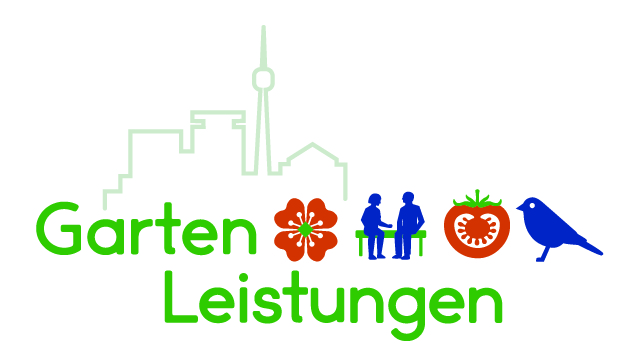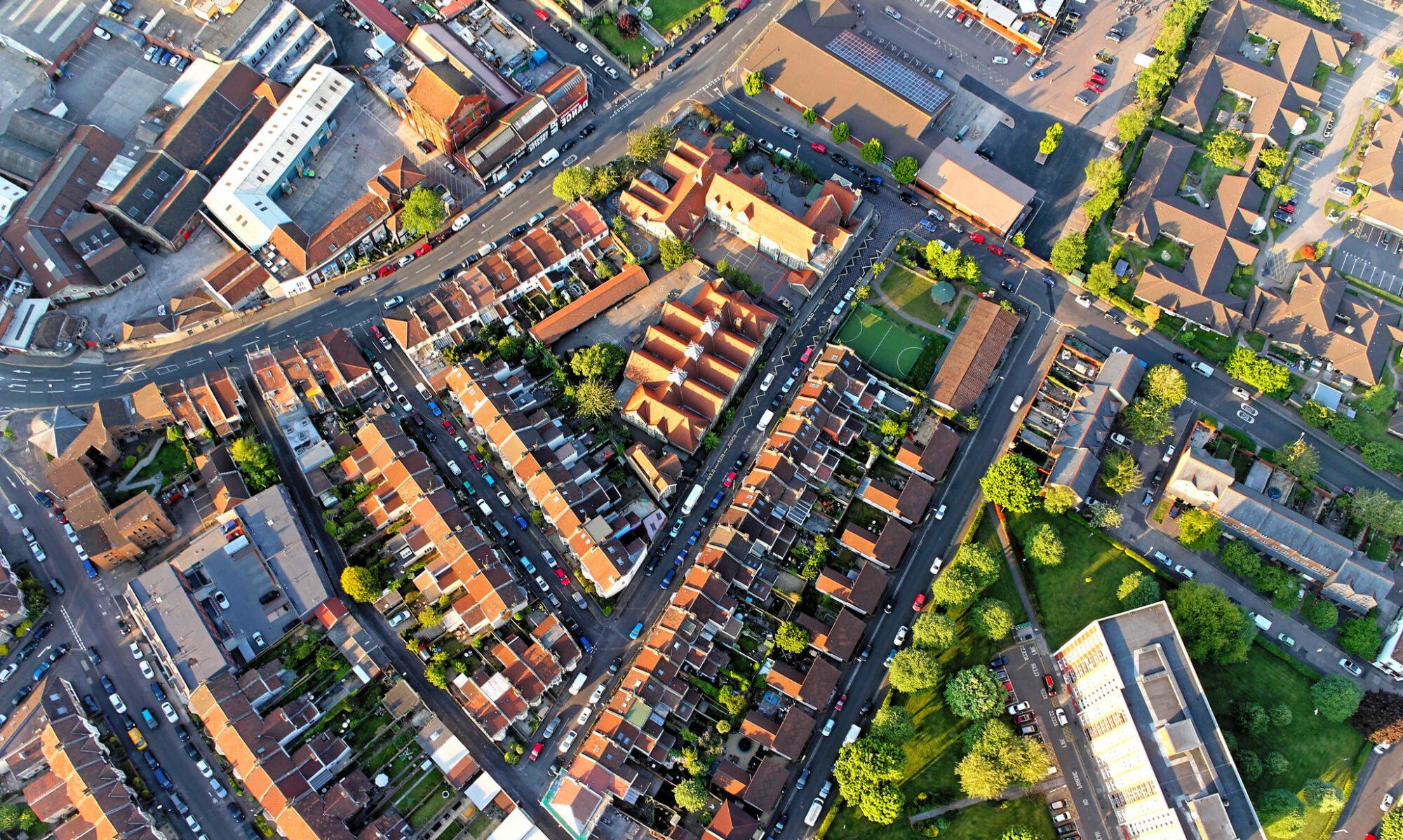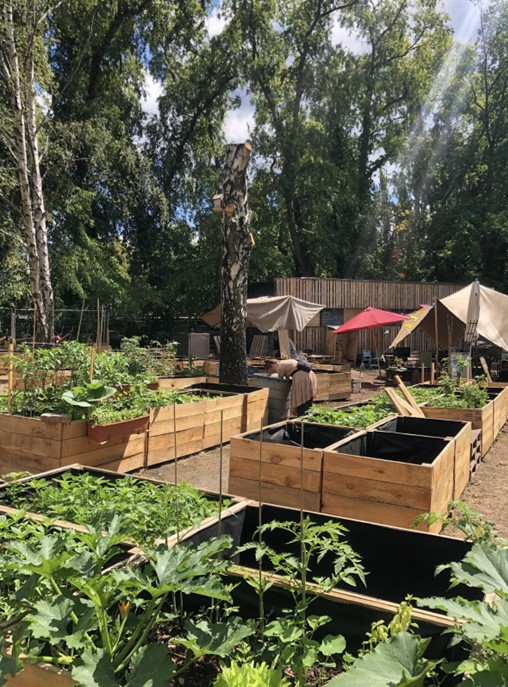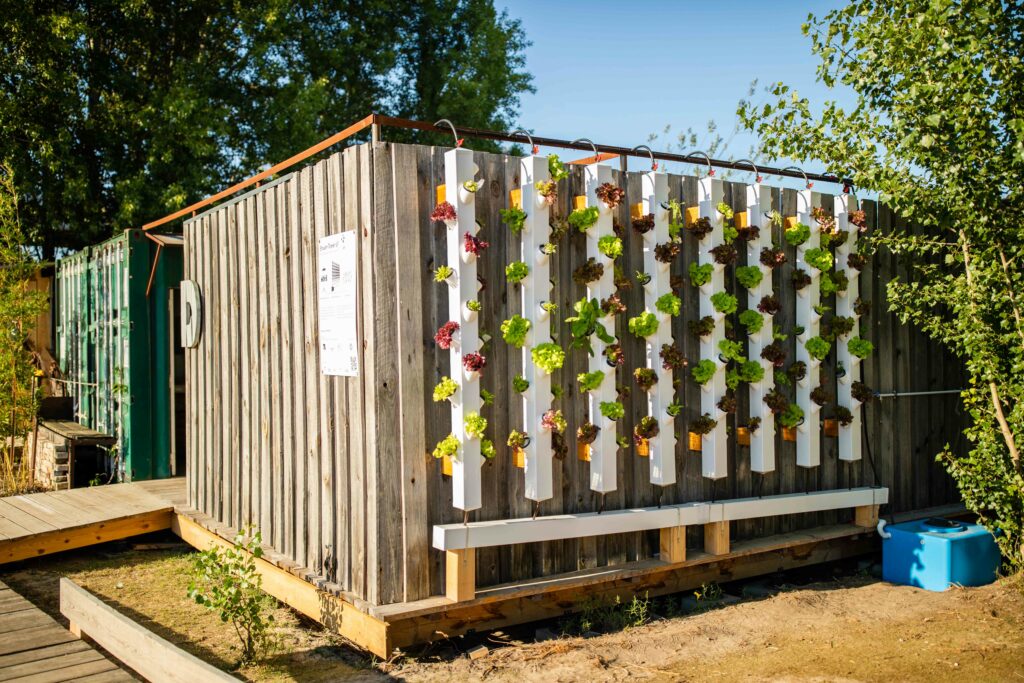GartenLeistungen II–
Evaluation of the multidimensional services of urban green

In cities, competition for undeveloped land is becoming increasingly intense. Urban gardens and public parks are often threatened. Yet they not only offer recreation and an experience of nature, but also make an important contribution to sustainable urban development by regulating water cycles and the microclimate. GartenLeistungen II is committed to making the positive effects of urban green visible in administration, planning and politics, and better utilized for sustainable urban development.
Urban green as the key to sustainable urban development
Urban gardens and public parks compete with other types of use for scarce space in urban areas. However, they are of central importance for sustainable urban development because they have a major impact on the urban climate, water cycles, biodiversity and the quality of life in cities. The GartenLeistungen II project aims to highlight these services in order to improve the decision-making basis in consideration processes for the relevant stakeholder groups. To this end, the processes already initiated in municipal planning and politics will be consolidated and transferred to municipal parks in the cities of Frankfurt and Berlin as well as allotment gardens in Leipzig. In addition, innovative approaches to solutions for a resource-efficient city will be further developed and the exchange between science and practice will be promoted through new associations in the real laboratories, expert discussions, networking meetings and the national conference.
Multidimensional services of urban gardens and parks
In the first phase, the project team recorded the multi-dimensional services of selected urban gardens and parks, generating sound information for policy consideration decisions in the implementation of sustainable land management. The researchers showed that these green oases provide services worth several hundred thousand to millions of euros per year for the urban population, depending on their equipment, location and size.
For this purpose, the team determined and evaluated the retention of heavy rain, the cooling of the environment, the cultivation of food, climate protection through carbon retention, health effects through improved air quality, and also surveyed the social and cultural value of urban green spaces via a survey.
In living labs, the scientific partners, together with the cities of Stuttgart and Berlin, as well as park projects and urban garden initiatives, tested innovative solutions to strengthen services for sustainable land and material flow management.
Consolidation of a blue-green infrastructure in the urban space
Based on the successful first phase, the processes initiated in Berlin and Stuttgart are consolidated in municipal planning and politics in the second project phase and transferred to other municipalities. The solutions and prototypes developed in the living labs for resource efficiency, closing water cycles and the local production and use of food and biomass in urban gardens and parks will be tested and consolidated at other locations with the participating practitioners from administration, park management and garden initiatives. The evaluation of the services of urban green spaces will also be transferred to other municipalities and urban gardens and parks with different framework conditions.
GartenLeistungen II thus develops conceptual prerequisites and concrete practical steps for the rapid dissemination of blue-green infrastructures in urban spaces. The transfer of the extended economic evaluation of the services of gardens, parks and green spaces carried out by the IÖW provides an important further contribution to the discussion on the scope and transferability of economic evaluations of urban ecosystem services.
The results of the second project phase are to be incorporated into current municipal processes in cooperation with the city administration. With a national results conference, GartenLeistungen II also strengthens the knowledge transfer of the project results and the nationwide networking of relevant actors from science, administration, politics and civil society.
Project title
GartenLeistungen II – Implementation, consolidation and transfer of a socially, ecologically and economically sustainable land and material flow management in urban gardens and parks
Internet
gartenleistungen.de
Duration
01.07.2022–30.06.2024
Funding code
033W107AN, -BN, -EN, -FN
Contact
Malte Welling
Institut für ökologische Wirtschaftsforschung (IÖW) GmbH, gemeinnützig
+49 30 884594-73
malte.welling@ioew.de
Project Partners
Institut für ökologische Wirtschaftsforschung (IÖW) GmbH, gemeinnützig
Technische Universität Berlin
himmelbeet gGmbH
Landeshauptstadt Stuttgart
Version of
April 2023
Information on the first funding phase (2019 – 2022) can be found here
Results
Results of the second funding phase
Results of the first funding phase
Results of 2019 – 2022 –
Contribution to the publication of the results of the first funding phase Gärten und Parks schaffen Millionenwerte für die Stadtbevölkerung
Results of 2021 – Contribution to the RES:Z-Newsletter 3: Monetarisierung von Ökosystemleistungen
Results of 2020 – Contribution to the RES:Z-Newsletter 2: Ökosystemleistungen urbaner Gärten
Results of 2019 – Contribution to the RES:Z-Newsletter 1: Urbane Gärten und Parks
Publications
Sven Stinner, Grit Bürgow, Vivien Franck, Jesko Hirschfeld, Paul Janson, Lea Kliem, Milena Lang, Catharina Püffel, Malte Welling: Den multidimensionalen Wert urbanen Grüns erfassen. In: Stadtforschung und Statistik: Zeitschrift des Verbandes Deutscher Städtestatistiker 34/2 (2021), S. 24-32.
Grit Bürgow, Andreas Horn: Vertikalfarmen für den Anbau in der Stadt. In: der gemeinderat 9 (September 2021), S. 28-29.
Grit Bürgow, Andreas Horn: Mobiles Wasserrecycling & Vertical Farming. Gemeinschaftliche Prototypentwicklung für den Stadtraum. In: Stadt + Grün 12 (2020), S. 34-39. (link)




